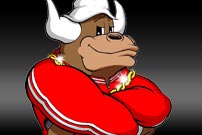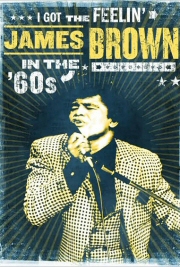 With the temperature dropping, it's time to find someone to keep you warm. Find your hookups with our online dating guide!
With the temperature dropping, it's time to find someone to keep you warm. Find your hookups with our online dating guide!
- Pop
- Unrated
- 2008
- Buy the DVD
Reviewed by Mojo Flucke, PhD
()
n 2008, a lot of us remember James Brown as the preacher man in “The Blues Brothers.”Or the man in the MTV video from his only major hit since about 1975, "Living in America." Or the drugged-out-of-his-mind singer who did some hard time after engaging in domestic abuse and leading police on a car chase over state lines. Or the incoherent singer Eddie Murphy somewhat lovingly parodied on those comedy records that fueled his post-“Saturday Night Live” popularity, bridging the gap between his TV and movie career.
This box set resets the record and takes a deep dive into the heart and soul of Brown's career during the 1960s, when his singing and dancing were a force of nature, and when he was a social force to be reckoned with during the civil rights era. As an interview here with Al Sharpton puts it into context, the Godfather of Soul broke philosophically with some civil rights leaders – including his close friend Dr. Martin Luther King – and didn't ask for government handouts; he simply demanded equal opportunity for black people. Thrust into the role of black leader by the ironically named Kevin White, mayor of Boston, Brown involuntarily kissed $50,000 goodbye when White declared his Boston Garden show would be broadcast live on television the day after King was assassinated. Annoyed and not particularly sympathetic to the plight of White – who was watching his fellow mayors in D.C., Baltimore, Detroit, L.A., and more than 90 other cities preside over riots, fires, arrests and deaths that day – Brown nonetheless put on one hell of a show to a mostly empty house.
It's all captured here on one of the DVDs, a documentary featuring commentary from White, horn player Fred Wesley, Sharpton, Cornel West, and many others. Another DVD features the straight playback of the broadcast. In short, the idea worked: people stayed home to watch the show, and Boston was spared the riots, fires, and looting. At one critical moment during the show, concertgoers stormed the stage, and police prepared to pounce – all on live television. In what some critics would call the defining moment of Brown's career – and perhaps relevance to American society – the singer ordered police to take a step back and told the audience members to "stop making me look bad," and directed traffic himself. At that moment, Brown discovered how much of a leader he was, and never looked back: The mayor of D.C. came calling for a similar show to help connect with its black community, and then others. After that, Brown became more than just the sum of his tunes.
So that story's all there, in case you need some schoolin'. In retrospect, it's stunning how unstable America was in 1968; us young-uns can only compare it to the weeks following 9/11, when the skies were empty, receiving snail-mail was a scary proposition, and it was imagined that an Al Qaeda cell was getting ready to pounce on our own hometowns and wreak havoc and destruction at our local shopping malls. Except in 1968, buildings did burn. People did die. And when King was shot, many people lost hope for a time. Agree or disagree with the likes of West and Sharpton, but there's no getting around the fact that this was one hell of a show, and Brown's finest hour. He took command and led when everyone else had no idea what to do next.
Social issues aside, for soul lovers, there is music here, too. Lots of it. A third DVD features “Man to Man,” a television concert broadcast of a 1968 Harlem gig at the Apollo, and other TV appearances as bonus content. James Brown the entertainer, dancing, singing, screaming, preaching. The man balladeer and R&B bopper who remade himself as a soul singer and then invented funk after that. A musical force who, like Miles Davis, changed with the musical times over three generations of fans, yet remained a creative monster. Few performers beyond Davis and Brown can claim that; the list is short – guys like Bowie and Prince and Paul McCartney, gals like Madonna – but in an age of limousine liberalism and political posturing, James Brown was the only one who could say his music saved lives on April 5, 1968. And as a side benefit, the music is freaking great: the rhythm section crisp, the horn section hot, the background singers in perfect harmony, and of course, James Brown positively on fire, sweating his face off. Brown should always be remembered like this.
You can follow us on Twitter and Facebook for content updates. Also, sign up for our email list for weekly updates and check us out on Google+ as well.











